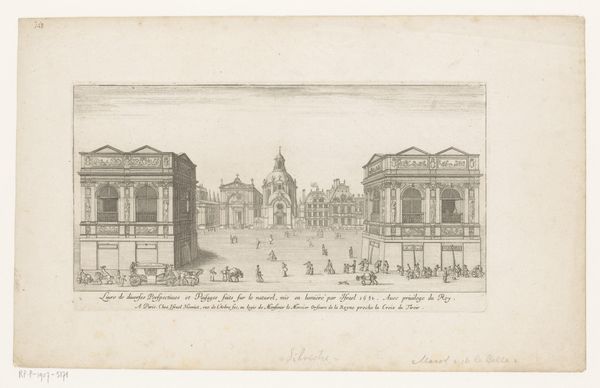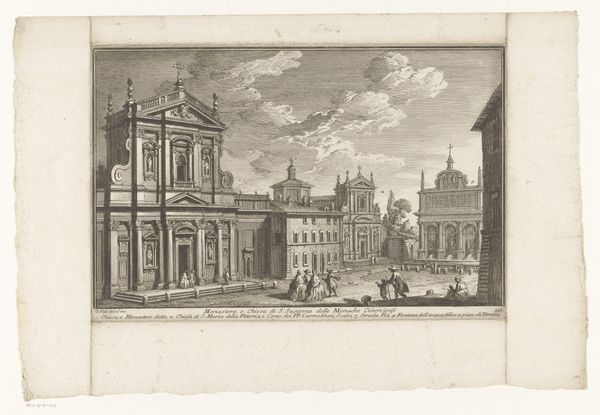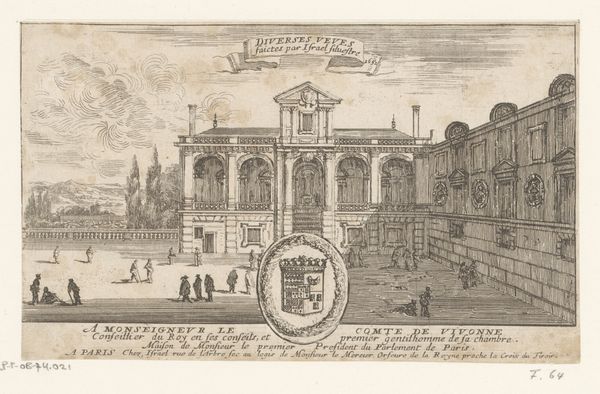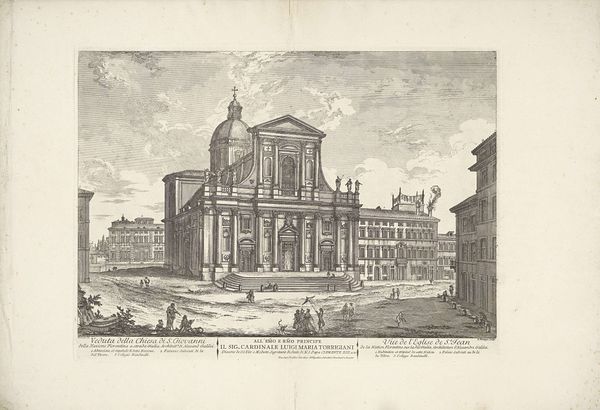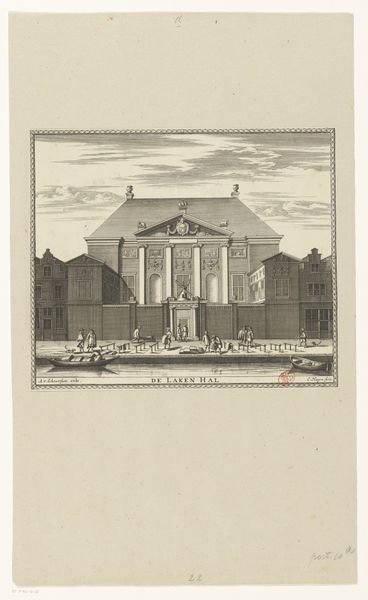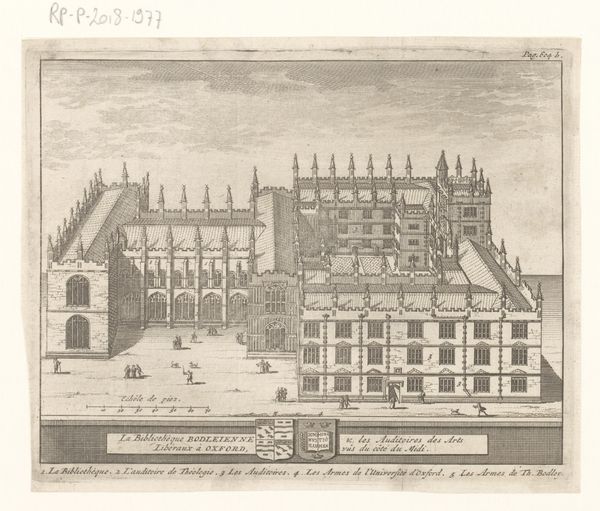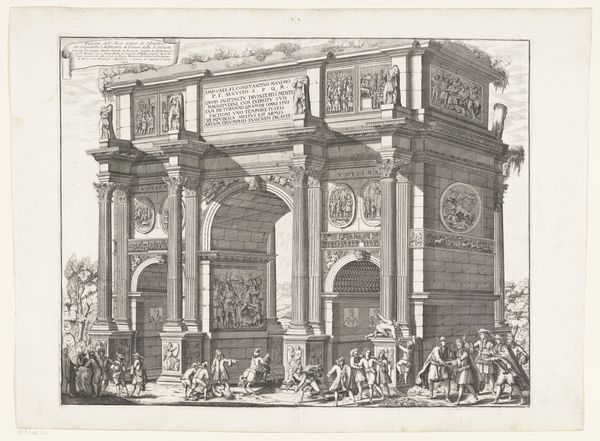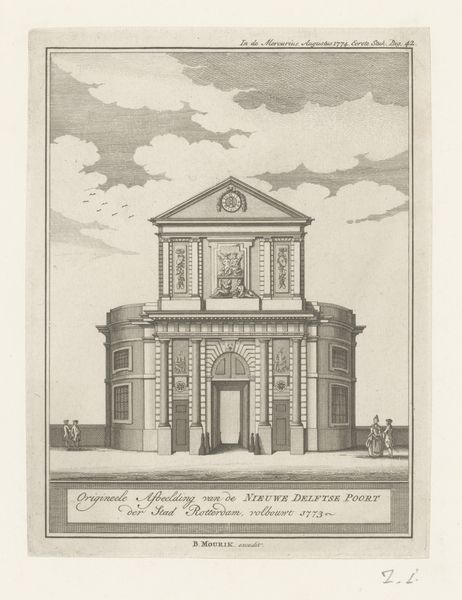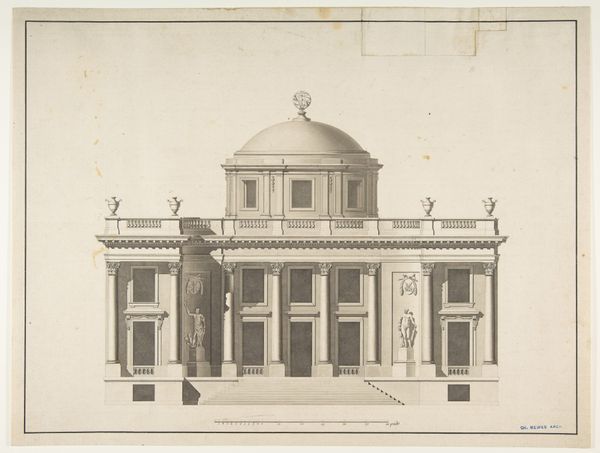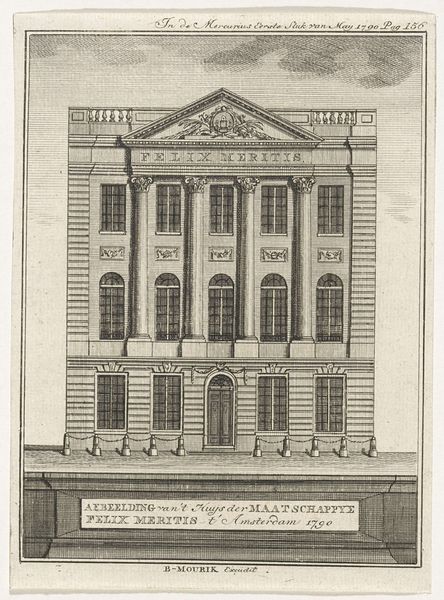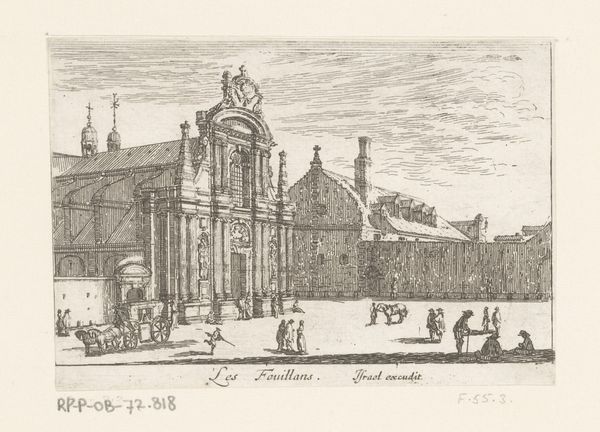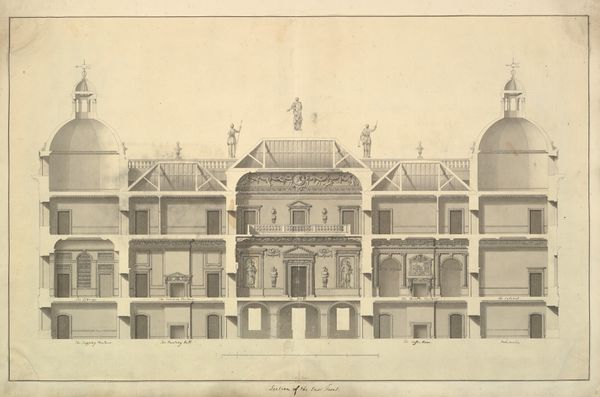
engraving, architecture
#
baroque
#
cityscape
#
engraving
#
architecture
Dimensions: height 130 mm, width 169 mm
Copyright: Rijks Museum: Open Domain
Curator: Looking at this engraving, “Gezicht op het Sheldonian Theatre, te Oxford” from 1707, attributed to an anonymous artist, my first thought is one of formality. Editor: I feel a sense of almost rigid order and control – everything seems so symmetrical, almost oppressive in its precision. I'm immediately curious about the historical forces that were at play when this was rendered. Curator: Right, considering the social context, this reflects the architectural aesthetics and power structures of the Baroque era. Notice the grandeur of the Sheldonian, almost presented as a stage for intellectual performance and societal gatherings. Think about who was represented and given agency here? Who wasn’t? Editor: Absolutely. The architecture looms large, dominating the human figures, reducing them to almost decorative elements. It’s a potent reminder of how structures can dictate and shape our experience and interactions. What does the layout and function of such a building say about the socio-political priorities of its commissioners, do you think? Curator: I would argue that, like many academic and public buildings of this era, the Sheldonian was envisioned to communicate prestige and the control that education held at this time. Also, while Oxford now may embrace more pluralistic ideals, who would’ve been deemed “worthy” enough to partake in its knowledge? Editor: Considering the architectural context alongside issues like academic gatekeeping adds an intriguing perspective. We might ask, too, how did architectural prints circulate? What social functions might they serve, beyond mere illustration? Curator: Perhaps these prints even operated as subtle instruments of power in their own right – propagating images and thus imbuing British ideologies to other nations as their styles traveled the globe. Editor: Precisely! Seeing the piece from this new angle makes the cityscape far less neutral. I can only imagine the kinds of political narratives these visuals would spread across nations as new social norms solidified around higher education. Curator: This reminds me that, even in seemingly objective representations, we're constantly negotiating historical and cultural frameworks of power and ideology. Thank you for joining me! Editor: A vital reminder to question even the most static and austere of images.
Comments
No comments
Be the first to comment and join the conversation on the ultimate creative platform.
